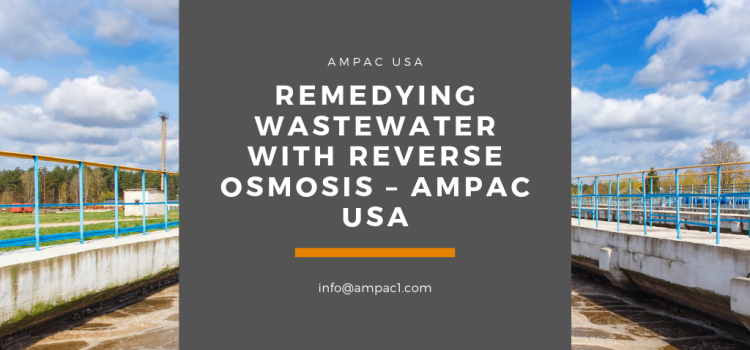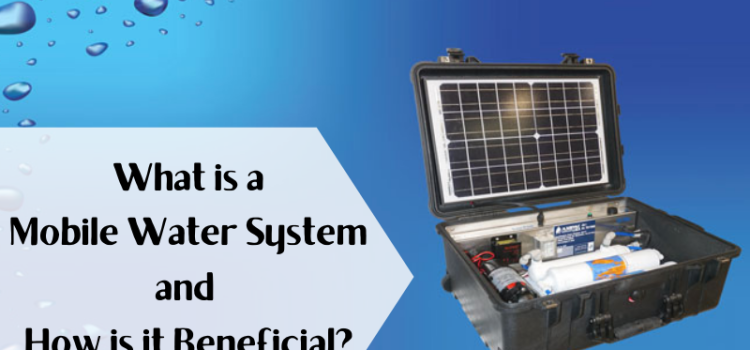Summary:
Wastewater has been a cause of concern for industries facing stringent environmental protocols. Previously, it was dumped in the surrounding area, rivers, lakes or in the sea. It is now clear that Industrial waste is a major cause of land and water pollution which led to the regulations. Today, industries have a more constructive solution to the problem of wastewater. Reverse Osmosis which found its application for producing drinking water is now being applied for treating the liquid waste created in industries. In this article, AMPAC USA discusses how reverse osmosis aids the process of wastewater treatment turning factories and facilities to be more sustainable through recycling.
Description
Beginning in the late 1700s and lasting for almost a century, the industrial revolution saw a spike in factories and manufacturing facilities. Way back then, waste was not a problem to be concerned with, it was simply dumped any place that did not serve a purpose. Almost three centuries later, the waste generated by industries is one of the leading causes of increased water stress. Because of the ever-increasing pollution in the freshwater reserves, it was decided by many local and in some places central authorities that someone needs to pull the brake. And so, environmentally friendly procedures, regulations, and standards came into play where industries were now required to treat whatever is rejected so that it doesn’t harm the surroundings.
One such big reject is industrial wastewater. Containing unfathomable amount of industrial chemicals, dirt, possible organic growth and sediments, this particular reject is harmful than most as it directly impacts marine life in the rivers and lakes. Not to mention these are the sources of drinking water for millions of people especially in the U.S. And thus, in order to treat it, one needs a procedure that is economically viable, ecologically friendly and doesn’t require a whole lot of manual intervention.
Reverse Osmosis For Wastewater Treatment
The process of reversing the naturally occurring osmosis is called Reverse Osmosis. Previously held in theory, it is now used for purifying water for millions of people to drink every day. It is used extensively for residential, commercial and industrial purposes. When it can be used to provide healthy water, it can definitely be used to treat the liquid waste rejected by industries and here is how.
The applications of RO is not limited for consumption purposes. It is customized for each requirement. It can be used by pharmaceutical companies and chemical industries that require high purity water. For this requirement, the membrane in an RO assembly needs to be stringent with its filtration. For the purposes of drinking, it can be let loose a little and so for wastewater, industries can get custom made equipment that produces water reaching the standard levels of environmental regulations. These types of equipment vary from factory to factory and are made through a carefully designed method.
Method Of Designing A Wastewater Treatment Equipment.
The method involves a number of steps of which some are briefly explained as follows:
- The process begins with an in-depth evaluation of the wastewater analysis report.
- A treatment regime is then designed, and if needed, a bench-scale pilot trial is performed to validate the designed regime.
- Once relevant validations are obtained, the treatment system is constructed and delivered, for installation and commissioning by the operators/ owners.
- Calibration and optimization of the system are performed until optimal performance is achieved, and the end-users typically continue close monitoring for the first year of operation.
This enables the industry to be in accordance with the regulation board while still working. Financially, investment in such equipment is high at first but with the right maintenance, the company can save more. The system, when brought from a trusted manufacturer can run for years without a breakdown and with periodic maintenance can even be an asset.
This treatment is useful in solving a wide range of waste problems.
- Blackwater from E&P (exploration and production) typically involving advanced oil-water separation technologies
- Black and grey water treatment from industrial operations typically involving dynamic sequencing batch reactors (SBR)
- Food manufacturing and other high-organic content wastewater, potentially through membrane bioreactors (MBR)
- Water reclamation, a value-adding activity increasingly used worldwide to mitigate the depletion of groundwater sources, using reverse osmosis after initial mitigation of contaminants
Wastewater treatment is also used for groundwater replenishment programs often initiated by governments. This is done in partnership with several industries so that none of the waste reaches any unwanted location and even helps build the groundwater profile. Water reclamation, a value-adding activity is now increasingly used worldwide to mitigate the depletion of groundwater sources, using reverse osmosis after initial mitigation of contaminants. The Reverse Osmosis systems help treat the waste and the produced water is directed to the ground so that it can be used for consumption later. A noble solution, it could help put a long pause, or even, end to the problem that is Water Crisis.









